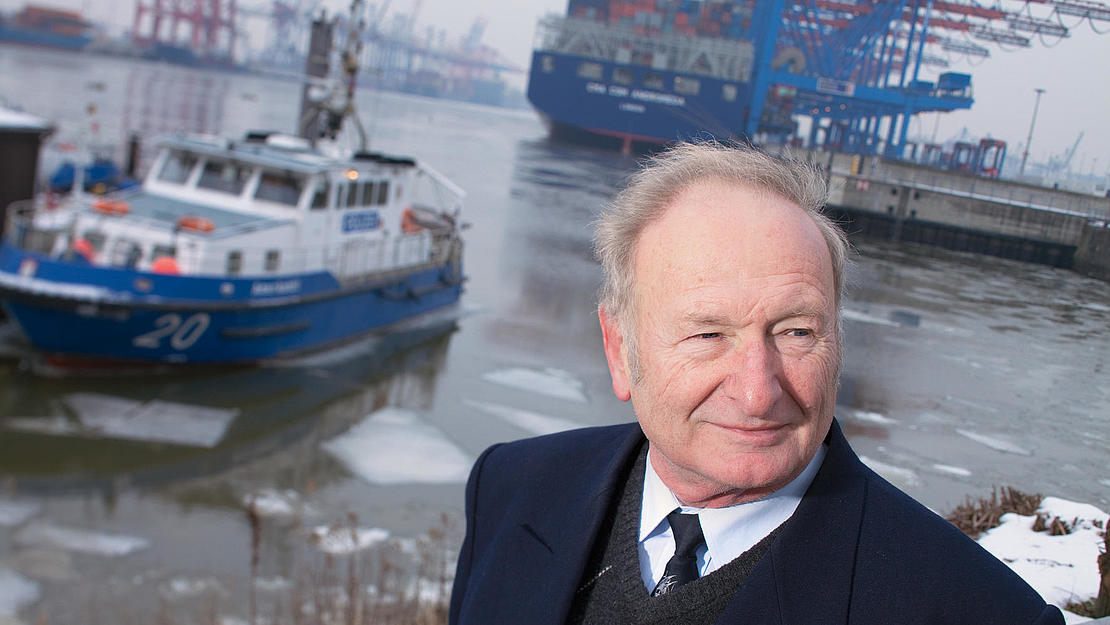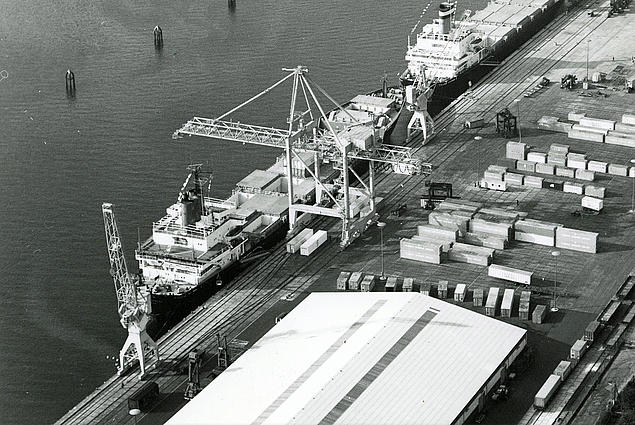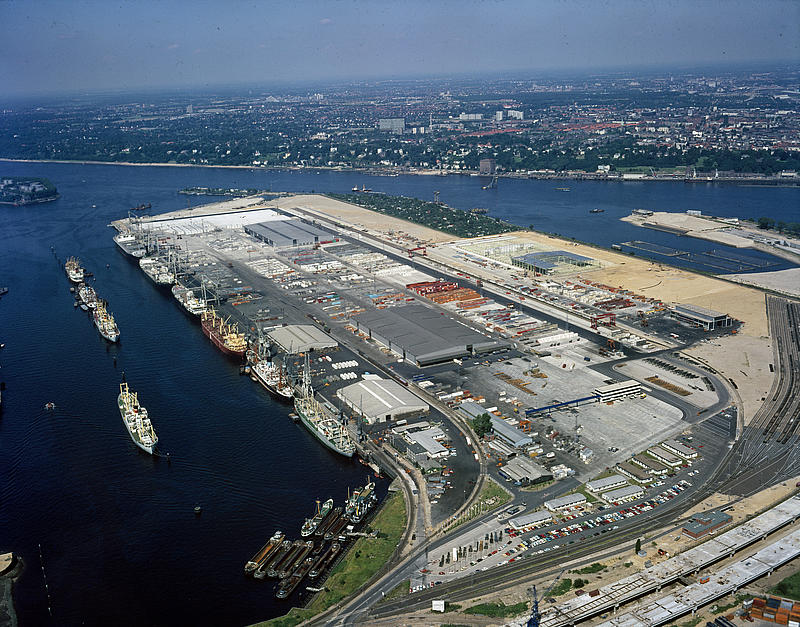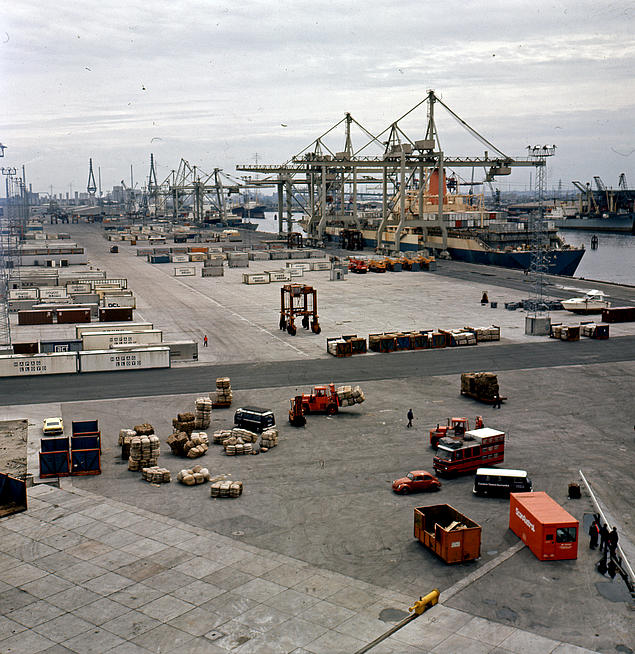
Can you still remember the first container to arrive at the Port of Hamburg?
The first container arrived as deck cargo aboard a conventional break bulk ship and was handled with the usual shipboard cargo handling equipment.
That was in 1966 at Burchardkai?
Yes, in the late ‘60s we had a multipurpose terminal there that was converted for specialised container handling. Container throughput increased quickly and dramatically. Berth 3 was equipped with the first container gantry cranes that were available on the market.

Which ships and volumes were you handling at that point?
In the autumn of 1968, four to five fully containerised ships were arriving at Burchardkai every week – ships from USL, the British consortium OCL and the Scottish shipping company Ben Container Line. Hapag-Lloyd specialised very quickly with the Sydney Express and the Melbourne Express. They had a capacity of 780 TEU to start with, then 1,000 TEU for North American routes. For Australian routes, container ships were soon being used with capacities of 1,660 to 1,800 TEU. These were joined by ships carrying the third generation of containers for routes to the Far East/Asia. They were mostly Japanese shipping companies like MOL and NYK, but also Evergreen from Taiwan.
How did the staff like the new technology?
The old “dockers” – port workers who had done the really tough manual labour – and the supervising load masters were quickly retrained in the new technology. At first the containers were transferred to trains using unique equipment manufactured by the Coles company. This was a technical monstrosity with swivelling telescopic arms that could couple containers by itself. Soon, we introduced the straddle carriers as transport and stacking vehicles, though at the beginning they could only stack containers two high. Railway loading was also done with these straddle carriers; for example, they transported the containers right over the rail waggons, which had been shunted into separate groups of five.

All-around dockers became skilled specialists?
Not straight away. In order to structure this container/break bulk revolution efficiently, the staff was deployed in varying positions. First they unloaded the ship, then they unpacked containers. The entire rates structure also changed tremendously. The traditional quay tariff was revamped and the administration had to contend with completely new payment structures, the container handling rate. Of course, Sales first had to negotiate these new fee schedules with the shipping companies. All in all, it was a complete revolution in handling and the rates structure.

And ship planning was computerised fairly quickly?
We experimented and improvised a lot during that phase – nobody can imagine it today. Stowage plans were created by punching container data on punch cards. The load masters initially drove through the area with the allocation plan and checked the numbers on the boxes. But this method of container identification quickly became obsolete. Later, we were the first terminal in the world to switch to satellite scheduling.

You could still see what was in the containers? Which goods were transported like that?
Initially, tinned food and lots of textiles from the Far East. Later, it was TVs and motorbikes. Break bulk was packed crate by crate at first – it wasn’t even on pallets. That only changed gradually.